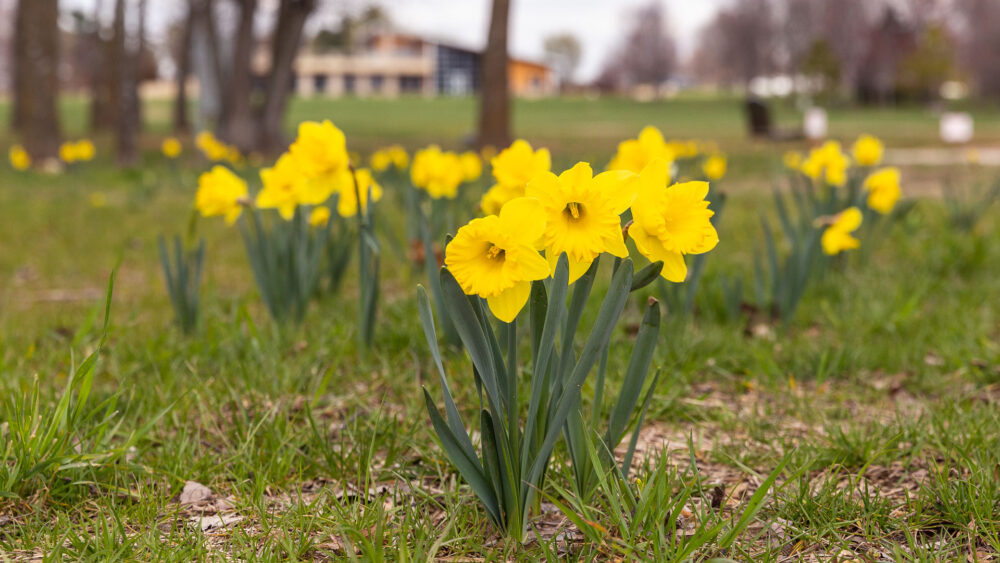Daffodils aren’t native to the region, but they are a relatively benign and flashy addition that appear at this time of year.
One of the things I love the most about the Columbia-Pacific region is that our winters never last too terribly long.
Growing up in the Missouri Ozarks, I was used to freezing temperatures and snow from late November well into March, with a not-infrequent last gasp of cold in April.
Here, winter is more merciful. I can often still find a scattering of (mostly nonnative) flowers into December, and fungi like late oyster mushrooms persist until, and occasionally through, the first freeze.
The comparatively mild coastal climate means snow and ice are rare, with the exception of this year.
And winter seems to end almost as quickly as it began, with the new year already showing promises of what’s ahead. I saw the first daffodil leaves emerging from the soil on the first of the year, and now we’re enjoying sunny yellow blooms heralding warmer days to come.
The chorus of territorial songs of birds is on the rise, and the family of coyotes that lives here at the south end of Loomis Lake is busy — and noisy — with preparation for this year’s litter of adorable, fuzzy pups.
I’ve even seen a few insects and spiders wandering over the sun-warmed ground on the nicer days we’ve had as of late, and when the nights aren’t too chilly the frogs have mustered a slow, murmuring chorus.
I’m under no illusion that spring has sprung, of course. March often holds some chilly breaths as the lion roars, so the rain gear and winter coat will stay on the hooks a little longer.
Hopefully, all the wildlife will still be able to find shelter here and there on days when the weather isn’t so favorable. I delay yardwork until at least May to make sure there are enough hidey-holes for everyone, just in case, and a little extra leisure time for me, too. But there’s something invigorating about the longer days. I can walk downstairs for a glass of water before teaching an evening online class at 6 p.m., and it’s still light enough outside to catch a glimpse of the last activities of birds and bushes.
I don’t have to hurry quite so much to finish a spontaneous afternoon walk or hike, and the juncos and chickadees at the feeders get more time to feast. It just feels like there’s more time for things to happen, even though we have the same 24 hours.

I have always loved May the most, with flowers and bumblebees, the first of the year’s fawns hiding in spotted coats, and gangling young coyote pups that appear to be ninety percent legs.
WillowWillows produce catkin flowers before their leaves, and these are often the best way to identify individual species.
But that span of late February until the Ides of March? That has its charms too. It may not be nature in its full splendor, but it’s a rustling and rousing of a sleepy world slowly coming back to consciousness. (Those last spans of chill could easily be an ecological snooze button saying “just five more minutes.”)
It’s like getting up just before dawn to see the light starting to seep into the darkened eastern sky when most sensible diurnal creatures are still sound asleep.
You know there’s a whole grand day ahead, with the sun arching high above in its daily traverse. So, too, shall spring and summer unfold in their time. But for this moment there is just that hint of what’s to come, and I relish the many possibilities of imminent hours and days, and my brush hovers just above the empty, open canvas.



